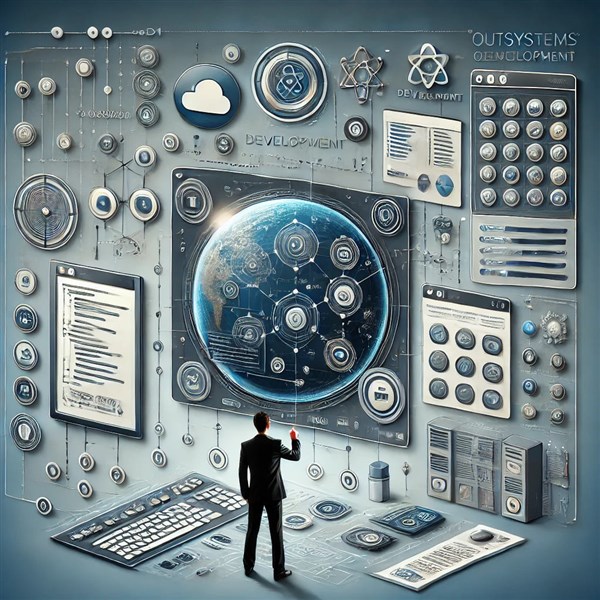We're open through the holidays to support your upskilling goals — book your session today!
We're open through the holidays to support your upskilling goals — book your session today!
Unable to find what you're searching for?
We're here to help you find it
As low-code development platforms gain popularity, businesses are turning to OutSystems to rapidly build and deploy enterprise applications. While OutSystems offers speed, flexibility, and scalability, security remains a crucial concern.
A secure OutSystems development approach ensures that applications are protected from cyber threats, data breaches, and compliance risks. Given that OutSystems applications often handle sensitive enterprise data, it is essential for developers to follow security best practices at every stage of the development lifecycle.
This blog explores the top security best practices for OutSystems development, helping organizations mitigate risks and safeguard applications against potential threats.
Why It’s Important:
Poor authentication and access control can lead to unauthorized access, data leaks, and security breaches. Ensuring that only authorized users can access critical application features and data is essential.
Best Practices:
✅ Use OutSystems’ Built-in Authentication Mechanisms
✅ Apply Role-Based Access Control (RBAC)
✅ Avoid Hardcoding Credentials
Why It’s Important:
Unencrypted data transmission and weak storage mechanisms expose applications to data leaks and cyberattacks.
Best Practices:
✅ Enable HTTPS for All Communications
✅ Encrypt Sensitive Data in Storage
✅ Secure API Endpoints
Why It’s Important:
Common vulnerabilities such as SQL injection, cross-site scripting (XSS), and cross-site request forgery (CSRF) can compromise application security if not properly addressed.
Best Practices:
✅ Prevent SQL Injection
✅ Mitigate Cross-Site Scripting (XSS) Attacks
✅ Prevent Cross-Site Request Forgery (CSRF) Attacks
✅ Sanitize File Uploads
Why It’s Important:
A weak database configuration can result in data leaks, integrity issues, and compliance violations. Ensuring proper database security measures protects critical business information.
Best Practices:
✅ Use OutSystems’ Data Access Control Mechanism
✅ Monitor Database Access & Usage
✅ Regularly Backup & Encrypt Databases
Why It’s Important:
Deployment misconfigurations can expose applications to security risks, outdated code, and unpatched vulnerabilities.
Best Practices:
✅ Use OutSystems Lifetime for Deployment Management
✅ Apply Security Patches & Updates Regularly
✅ Use Secure Deployment Pipelines
Why It’s Important:
Continuous security monitoring helps identify vulnerabilities, misconfigurations, and potential breaches before they cause major issues.
Best Practices:
✅ Enable OutSystems Security Monitoring Tools
✅ Conduct Regular Security Audits & Penetration Testing
✅ Implement Incident Response & Disaster Recovery Plans
Why It’s Important:
Organizations must comply with global security standards to avoid legal penalties and maintain user trust.
Best Practices:
✅ Adhere to Industry Security Standards
✅ Implement Role-Based Compliance Measures
✅ Document Security Policies & Employee Training
Conclusion
OutSystems provides a powerful low-code platform, but security must be a top priority for developers and organizations. By following these best practices, businesses can build secure, scalable, and compliant applications while minimizing risks.
Application security is an essential aspect of OutSystems development. Following the best practices can go a long way in protecting your applications from potential cyber threats. Enhance your skills and stay ahead in this tech-driven world with Koenig Solutions.
Key Takeaways:
✔ Use strong authentication & access control to prevent unauthorized access.
✔ Encrypt sensitive data & secure APIs to protect communication channels.
✔ Prevent common vulnerabilities like SQL injection & XSS attacks.
✔ Monitor applications & conduct regular security audits to detect threats early.
✔ Follow compliance standards like GDPR & HIPAA to ensure regulatory compliance.
By adopting these security best practices, organizations can ensure that their OutSystems applications remain safe, efficient, and resilient against cyber threats. 🚀

Aarav Goel has top education industry knowledge with 4 years of experience. Being a passionate blogger also does blogging on the technology niche.










